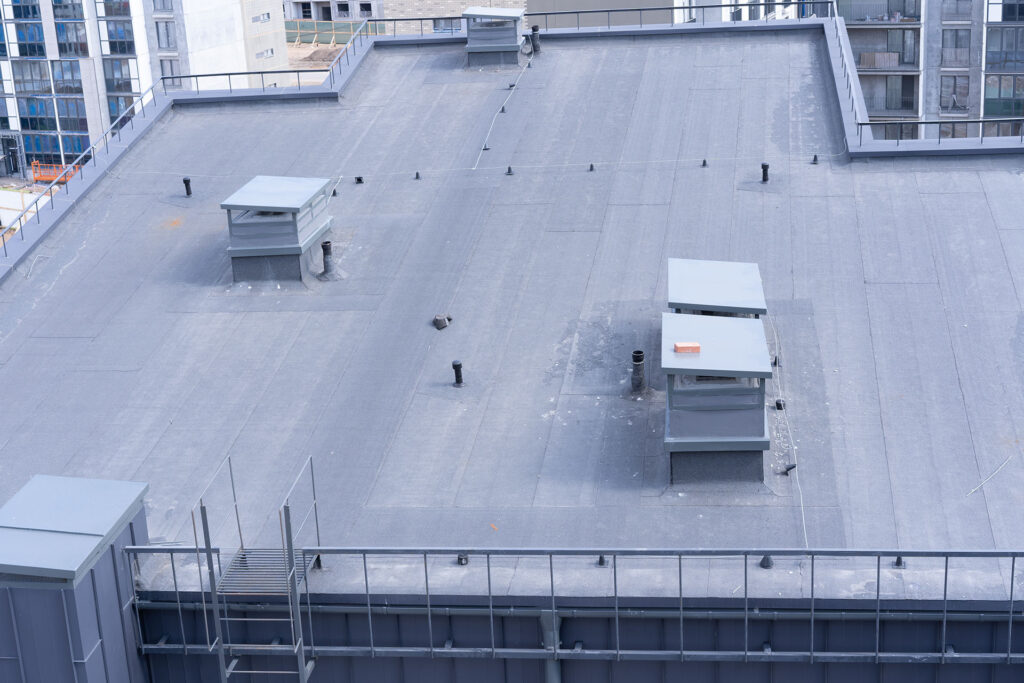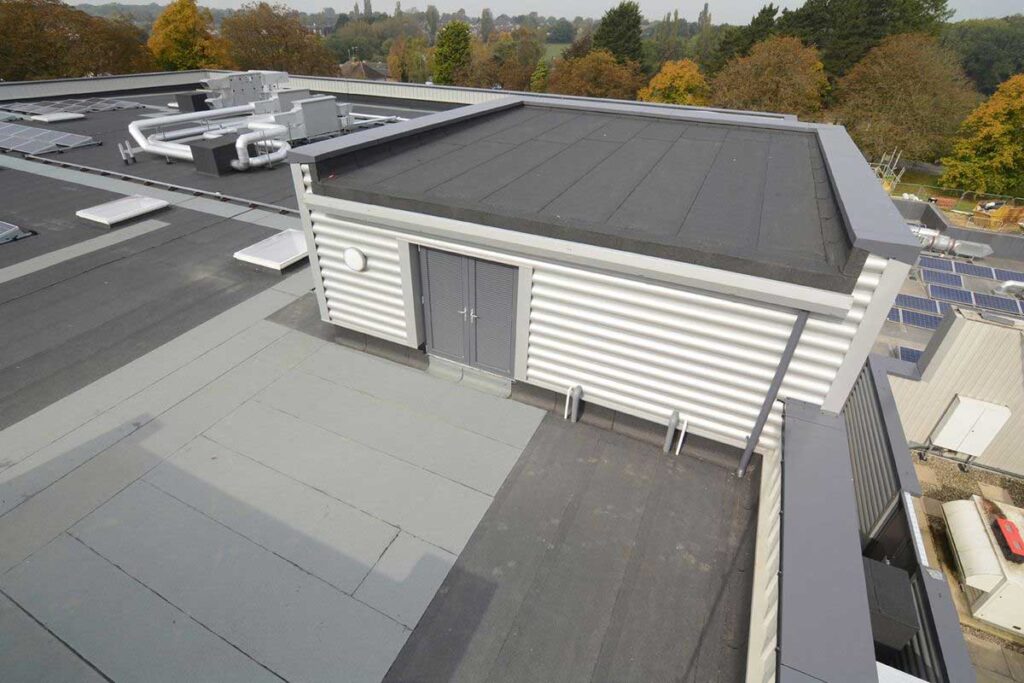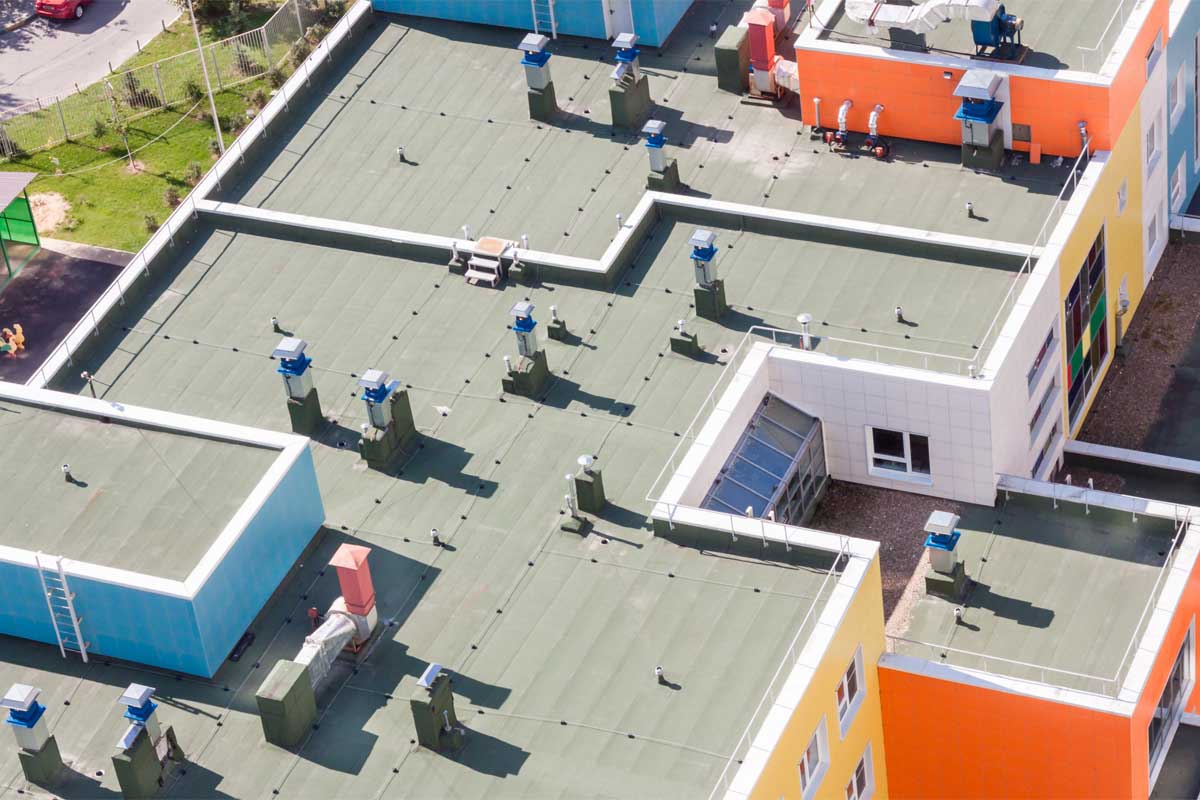Flat roofing systems have become a popular choice for commercial buildings due to their sleek design, ease of maintenance, and versatility. However, undertaking a commercial flat roof project requires careful planning and expert execution. At Nachman Construction, a trusted “flat roofing company” we understand the intricacies of these projects and have compiled this comprehensive guide to help you understand the key elements involved.
Understanding Commercial Flat Roofs
Commercial flat roofs differ from residential ones in terms of scale, structure, and material requirements. They are typically larger, requiring specialized equipment and materials designed to withstand heavy loads, weather conditions, and wear and tear over time. These roofs are often used to house HVAC systems, solar panels, and other equipment, so they must be robust and well-engineered.

Planning a Commercial Flat Roof Project
Before starting any commercial flat roof project, thorough planning is crucial. Here’s what you need to consider:
1. Assessing the Roof Structure
Begin by assessing the existing structure to determine its condition and load-bearing capacity. This step is vital, as it helps identify any structural issues that might require reinforcement or repair. Nachman Construction, your local “flat roofing company near me,” has experienced professionals who can conduct a thorough inspection to ensure your building’s structural integrity.
2. Choosing the Right Roofing Material
Selecting the appropriate roofing material is critical to the success of your project. Commercial flat roofs can be made from various materials, including EPDM (Ethylene Propylene Diene Monomer), TPO (Thermoplastic Olefin), and PVC (Polyvinyl Chloride). Each material has unique properties, such as durability, energy efficiency, and ease of maintenance.
- EPDM is a durable rubber material that’s resistant to UV rays and weather conditions.
- TPO offers energy efficiency and resistance to heat and chemicals.
- PVC is known for its durability and resistance to fire and chemicals.
Consult with Nachman Construction to determine which material best suits your building’s needs.

3. Designing for Drainage and Water Management
Effective drainage is crucial for flat roofs to prevent water pooling, which can lead to leaks and structural damage. Incorporate adequate slopes and drainage systems into your design to ensure water flows away from the roof. Our team at Nachman Construction, your reliable “flat roofing company near me,” has extensive experience designing efficient drainage solutions.
4. Compliance with Building Codes and Regulations
Commercial flat roof projects must comply with local building codes and regulations. These may include safety standards, fire resistance, and energy efficiency requirements. Nachman Construction is well-versed in these regulations, ensuring your project meets all legal requirements.
Executing a Commercial Flat Roof Project
Once the planning is complete, it’s time to execute the project. Here’s what to expect during this phase:
1. Preparing the Roof Surface
Before installing the new roofing material, the existing roof surface must be prepared. This process involves cleaning, repairing, and, if necessary, removing old roofing materials. Nachman Construction’s team ensures a clean and smooth surface to guarantee a secure and lasting installation.
2. Installing the New Roofing System
The installation process varies depending on the chosen roofing material. It typically involves laying a base layer, securing the roofing material, and sealing seams and edges to prevent leaks. Nachman Construction uses industry-leading techniques to ensure a robust and watertight installation.
3. Conducting Quality Inspections
Quality inspections are essential to ensure the roof is installed correctly and meets all safety standards. Our team at Nachman Construction performs rigorous inspections to identify any issues and make necessary adjustments. This step helps guarantee the longevity and performance of your new flat roof.
4. Providing Ongoing Maintenance and Support
After the project is completed, ongoing maintenance is crucial to keep your flat roof in top condition. Regular inspections, cleaning, and minor repairs can extend the life of your roof and prevent costly issues down the road. Nachman Construction, your trusted “flat roofing company near me,” offers comprehensive maintenance services to ensure your roof’s longevity and performance.
Conclusion
Commercial flat roof projects require careful planning, expert execution, and ongoing maintenance to ensure success. By following these guidelines and partnering with a reputable flat roofing company near you like Nachman Construction, you can achieve a durable, efficient, and long-lasting flat roof for your commercial building. If you’re ready to start your flat roof project, contact Nachman Construction today for expert advice and a tailored solution that meets your needs.



